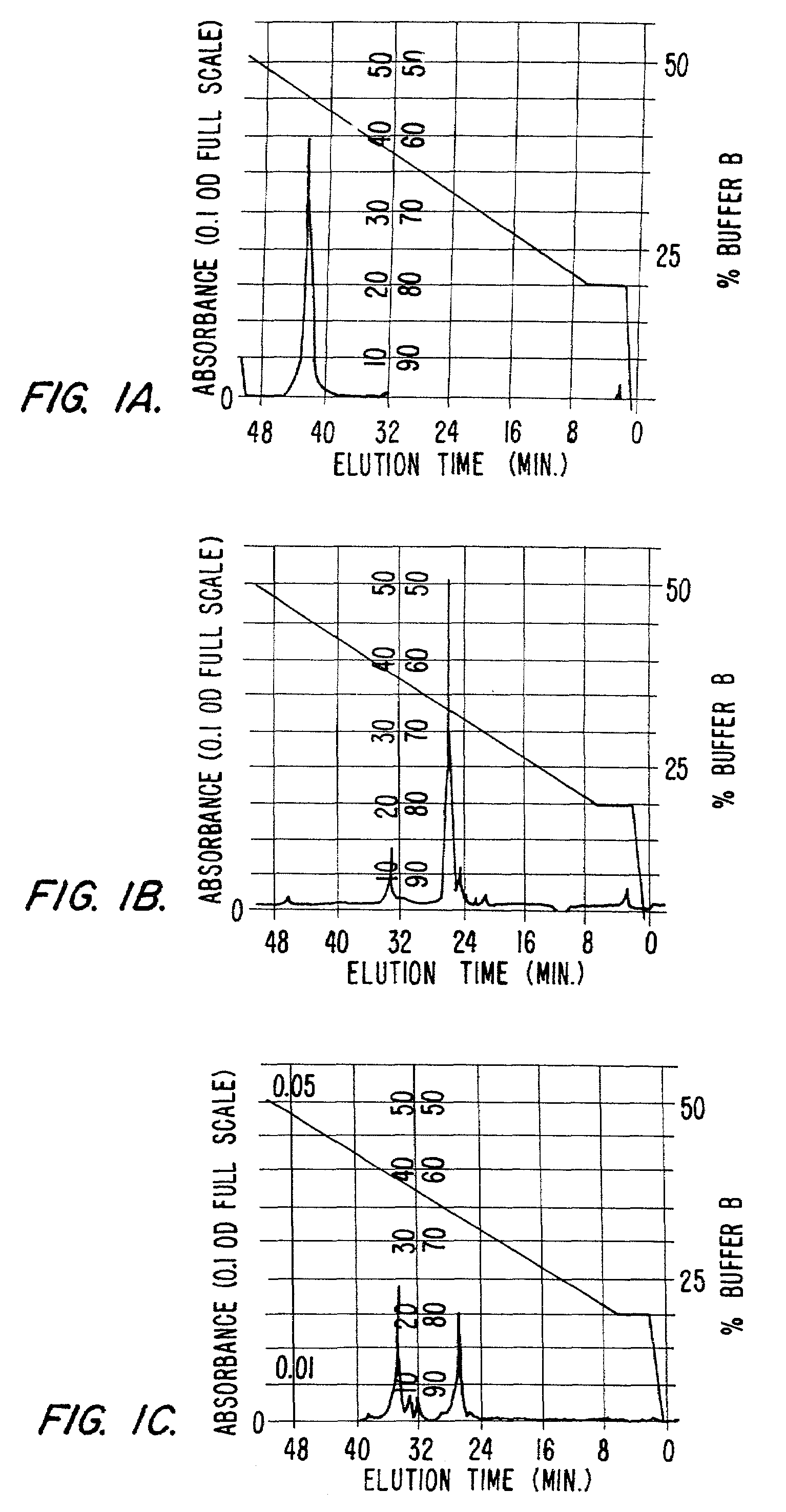Compositions for the detection of enzyme activity in biological samples and methods of use thereof
a technology for enzyme activity and biological samples, applied in the field of fluorogenic compositions, can solve the problems of difficult assays, high cost, insensitive and non-selective assays, and difficult assays, and achieve the effect of high fluorescence signal
- Summary
- Abstract
- Description
- Claims
- Application Information
AI Technical Summary
Benefits of technology
Problems solved by technology
Method used
Image
Examples
example 1
Synthesis of Fluorogenic Molecule for Detecting Protease Activity
[0201]Peptide syntheses and derivitizations were performed as described in PCT publication PCT / US98 / 03000 (WO 98 / 37226) which is incorporated herein by reference.
example 2
The Fluorogenic Protease Indicators Provide a Strong Signal When Digested
[0202]In order to demonstrate that the fluorogenic protease indicators of this invention are easily digested by a protease, the degree of cleavage was determined by assaying for the appearance of indicator cleavage products in the presence of a protease.
[0203]Approximately 1 microgram of protease indicator, having the formula F1-Asp-Ala-Ile-Pro-Nle-Ser-Ile-Pro-Cys-F2 (SEQ ID No: 184) where F1 is a donor fluorophore (5′-carboxytetramethylrhodamine (5-TMR)) linked to aspartic acid via the alpha amino group and F2 is an acceptor fluorophore (rhodamine X acetamide (R492)) linked via the sulfhydryl group of the cysteine was dissolved in a buffer consisting of 50 mM sodium phosphate, 1 mM EDTA at pH 8.9. To this solution was added 1 unit of elastase. The solution was analyzed by HPLC before and about 30 minutes after the addition of elastase. The digestion was carried out at 37° C. The HPLC separated components were ...
example 3
Quenching and Release of a Peptide Doubly-Labeled with One Fluorophore
[0207]It was a surprising discovery of this invention that the peptide backbones of this invention doubly labeled with one fluorophore still achieve fluorescence quenching thus suggesting quenching through another mechanism besides resonance energy transfer.
[0208]In order to assess the extent ground-state dimerization and collisional quenching contribute to the total observed quenching, the series of doubly-labeled peptides listed in Table 5 was synthesized.
[0209]In addition to comparing absorption spectra of the dyes alone with the NorFes peptides singly labeled with each dye, emission spectra taken before and after cleavage were compared to determine the percent of quenching and the existence of fluorescent signal quenching by means other than resonance energy transfer (RET).
[0210]Fluorophores were linked to the amino terminus via the α-amino group of Aspartic acid residue (D) and to the ε-amino group of lysine ...
PUM
| Property | Measurement | Unit |
|---|---|---|
| Wavelength | aaaaa | aaaaa |
| Wavelength | aaaaa | aaaaa |
| Hydrophobicity | aaaaa | aaaaa |
Abstract
Description
Claims
Application Information
 Login to View More
Login to View More - R&D
- Intellectual Property
- Life Sciences
- Materials
- Tech Scout
- Unparalleled Data Quality
- Higher Quality Content
- 60% Fewer Hallucinations
Browse by: Latest US Patents, China's latest patents, Technical Efficacy Thesaurus, Application Domain, Technology Topic, Popular Technical Reports.
© 2025 PatSnap. All rights reserved.Legal|Privacy policy|Modern Slavery Act Transparency Statement|Sitemap|About US| Contact US: help@patsnap.com



